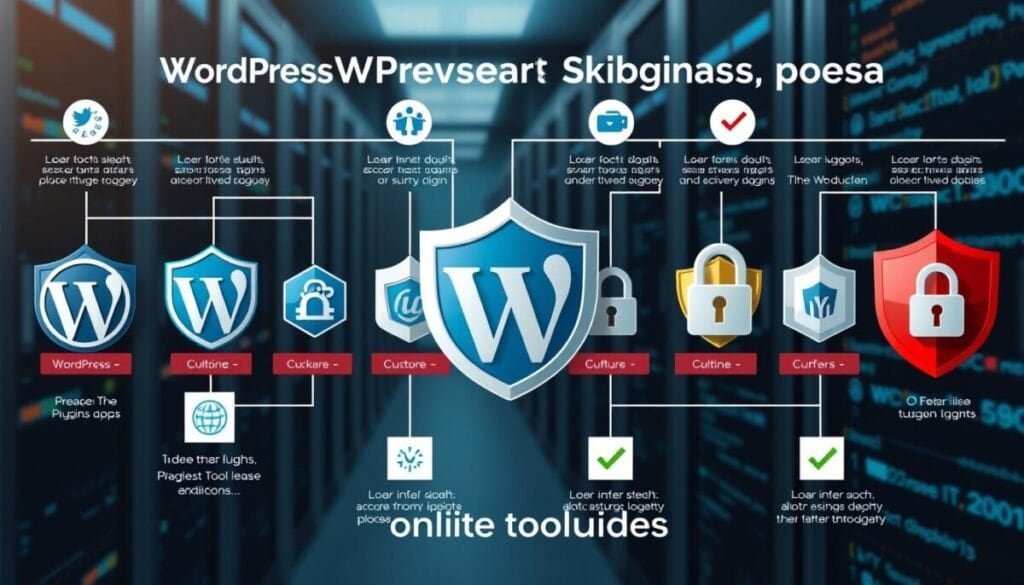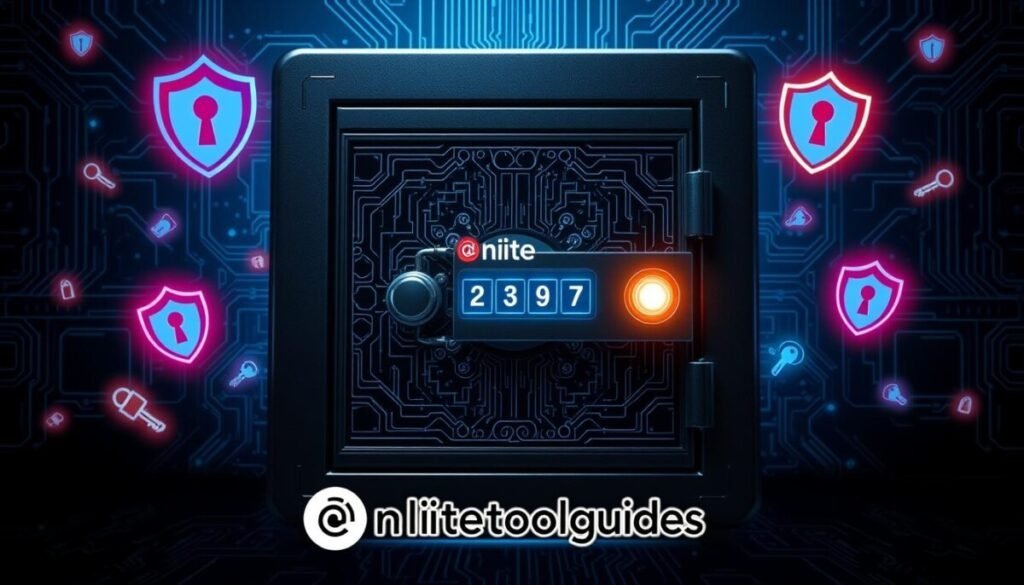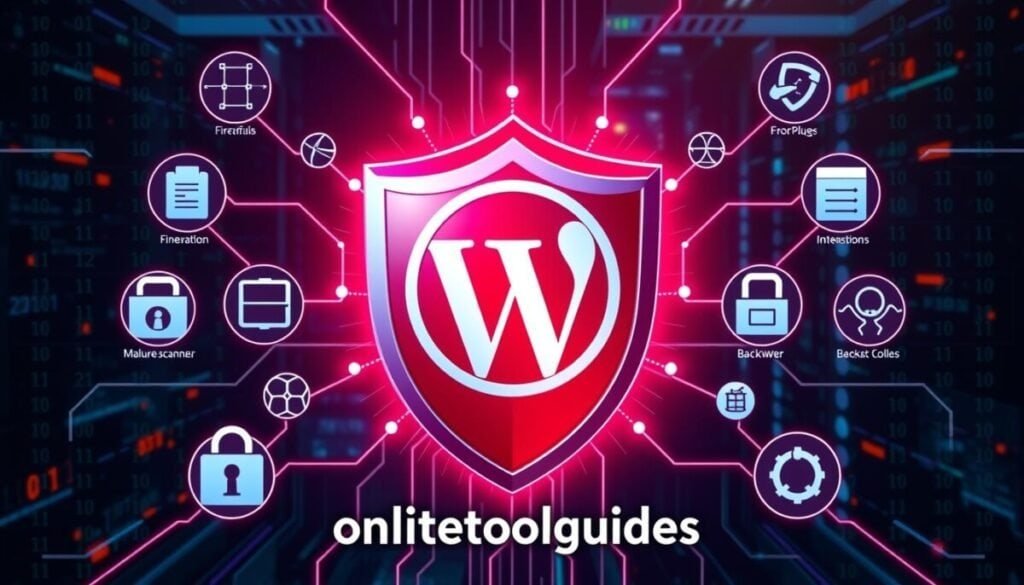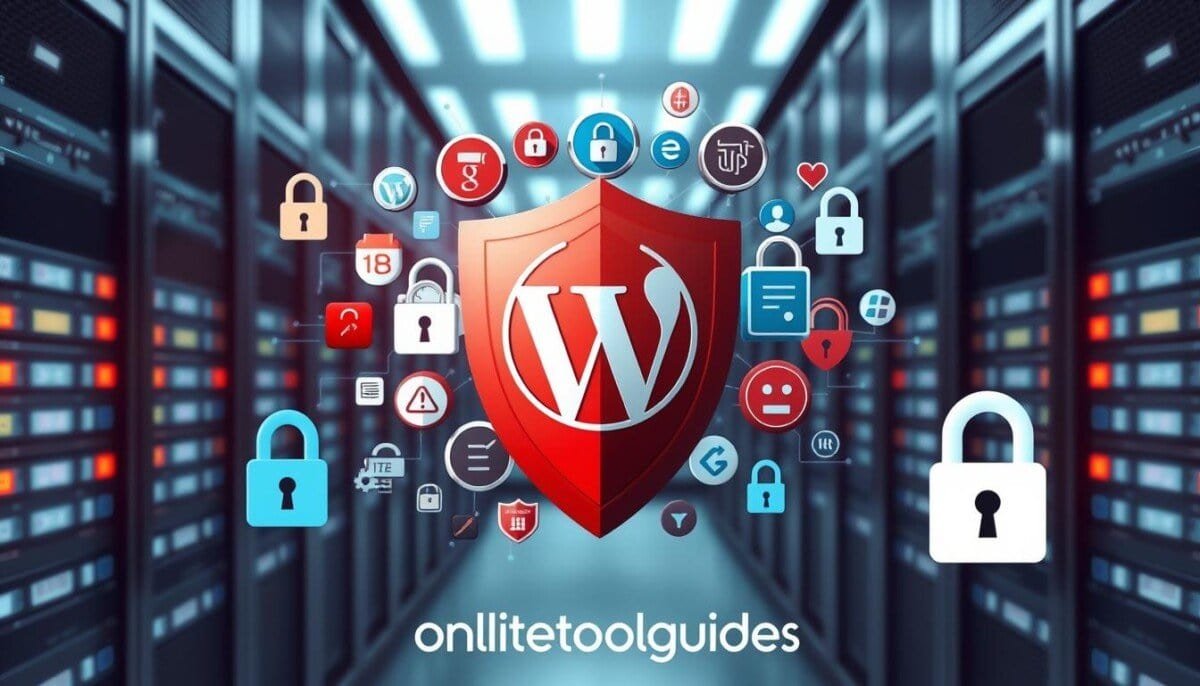Did you know WordPress powers over 64% of all websites? This makes it a big target for hackers. We’ll look at key plugins and practices to keep your site safe from hackers.
In our 11 years of web development, we’ve seen many security breaches. These could have been stopped with the right steps. We’ve worked on 2,500+ websites for clients. We’ve learned that strong security is key to protect your site, reputation, and profits.
The WordPress plugin repository has over 60,000 options. But, 56% of WordPress vulnerabilities come from plugins. This shows why picking the right security plugins and keeping them updated is so important. In 2021, WordFence blocked 86 billion password attacks.
We’ll show you how to pick the best plugins and follow practices that have helped our clients make over $100 million. These tips will help you protect your WordPress site, whether it’s a small blog or a big e-commerce site.
Key Takeaways
- WordPress powers 64.2% of websites, making security crucial for 810 million sites globally.
- 56% of WordPress vulnerabilities are linked to plugins.
- Wordfence Security blocked 86 billion password attacks in 2021.
- Proper security measures can protect your site’s reputation and revenue.
- Choosing the right security plugins is essential for effective website protection.
- Regular updates and best practices are key to maintaining WordPress security.
Understanding WordPress Security Threats
WordPress is used by 43% of websites, making it a big target for hackers. In 2021, security threats against WordPress jumped by 150%. This shows how important it is to protect our sites well.
Common types of attacks
WordPress sites face many security challenges. These include malware, DDoS attacks, and brute force attacks. Google blocks about 10,000 websites every day for malware or phishing.
Vulnerabilities in WordPress core, themes, and plugins
Even though WordPress is secure, problems often come from outdated software, themes, and plugins. A big 74% of WordPress problems are because of plugins. And 29% of these problems are never fixed, leaving sites open to attacks.
Impact of security breaches on websites and businesses
Security breaches can really hurt businesses. They cause money loss, harm reputations, and steal sensitive data. Google warns 12-14 million users every day about dangerous websites.
| Security Threat | Prevalence | Impact |
|---|---|---|
| Malware | 10,000+ sites blacklisted daily | Revenue loss, data theft |
| Plugin vulnerabilities | 74% of WordPress vulnerabilities | Site compromise, malware injection |
| Unpatched vulnerabilities | 29% of WordPress vulnerabilities | Ongoing security risks |
It’s key to know about these WordPress security threats. By using the right security steps, we can lower risks and keep our sites safe from attacks.
The Importance of Regular Updates
Regular WordPress updates are very important for a safe and fast website. Updates for WordPress, plugins, and themes help protect your site from threats.
Security patches are often released to fix problems in WordPress, plugins, and themes. Keeping your site updated lowers the chance of cyberattacks. In fact, old software is a big reason WordPress sites get hacked.

| Statistic | Value |
|---|---|
| Projected annual cybercrime damages by 2025 | $10.5 trillion |
| Hacking attempts on WordPress sites per minute | Over 90,000 |
| Percentage of hacked CMS platforms that were WordPress in 2019 | 90% |
Updating WordPress, plugins, and themes boosts security and site speed. Old plugins can slow down your site. This might make users leave faster.
To keep your site safe and fast, set up a regular update plan. Enable automatic updates for small WordPress changes. Then, test and apply big updates quickly.
Essential WordPress Security Plugins
WordPress security plugins are key to protecting your website from cyber threats. They offer firewalls, malware scanning, and login protection. This keeps your site safe.
Wordfence Security
Wordfence is a top pick for WordPress security. It has a web application firewall to block bad traffic. It also has real-time threat intelligence and thorough malware scanning.
Sucuri Security
Sucuri fights off many threats. It monitors file integrity and hardens security. The Sucuri Website Firewall blocks harmful requests, protecting your site.
iThemes Security
iThemes Security has many protective features. It includes two-factor authentication and database prefix changing. It also alerts you to file changes that might be breaches.
All In One WP Security & Firewall
This plugin makes security easy with its user-friendly interface. It offers login protection, firewall settings, and a security grading system. This helps improve your site’s defenses.
| Plugin | Key Features | Starting Price (Per Year) |
|---|---|---|
| Wordfence Security | Firewall, malware scanning, login security | $119 |
| Sucuri Security | Website firewall, malware removal, DDoS protection | $199 |
| iThemes Security | Two-factor authentication, database security, file change detection | $80 |
| All In One WP Security & Firewall | Login protection, firewall, security grading system | Free (Premium: $70) |

Choosing the right WordPress security plugin depends on your needs and budget. Look at features, ease of use, and compatibility with other plugins. Consider whether you need a firewall, malware scanning, or login protection. Some plugins offer a mix of these features, so assess what is most important to you. Additionally, make sure the plugin you choose is regularly updated and supported by the developer. If you’re still not sure which security plugin is right for you, consider doing a shopify vs woocommerce comparison to see which platform better meets your needs.
Implementing Strong Password Policies
Strong password policies are key for WordPress security. We must follow strict guidelines to keep our sites safe from hackers.
Best practices for creating secure passwords
Start with strong, unique passwords. Mix letters, numbers, and symbols. Try to make them at least 12 characters long. Don’t use personal info or common words.

Implementing two-factor authentication
Two-factor authentication adds more security. It asks for a second ID, like a phone code, besides your password. This makes it harder for hackers to get in, even if they guess your password.
Managing user roles and permissions
It’s important to control who can do what on your WordPress site. Give roles and permissions based on what each user needs. Only let admins do admin tasks. Check and update user roles often to keep things right.
| User Role | Access Level | Recommended Permissions |
|---|---|---|
| Administrator | Full | All site management tasks |
| Editor | Limited | Content management, no plugin/theme changes |
| Author | Restricted | Create and edit own posts only |
| Contributor | Minimal | Write and edit own posts, cannot publish |
By using strong passwords, two-factor authentication, and managing user access well, we can make our WordPress sites much safer.
WordPress Security: Essential Plugins and Best Practices
WordPress is used by about 40% of all websites. This makes it a big target for hackers. To keep your site safe, you need to harden WordPress and follow security tips. Let’s look at some key plugins and strategies for strong website protection.

Security plugins help fight off new threats. Here’s a look at some top choices:
| Plugin | Key Features |
|---|---|
| Wordfence Security | Firewall, malware scanning, real-time threat defense |
| Sucuri Security | File integrity monitoring, security hardening, malware scanning |
| iThemes Security | Brute force protection, two-factor authentication, database backups |
| All-in-One WP Security | User account security, file system protection, firewall |
There’s more to protecting your site than just plugins. Here are some extra steps:
- Keep WordPress, themes, and plugins updated
- Use strong passwords and enable two-factor authentication
- Perform regular backups
- Limit login attempts
- Monitor site activity
By using these security tips and reliable plugins, you’ll make your WordPress site much safer.
Securing WordPress Files and Directories
Protecting your WordPress site is key to keep it safe from hackers. We’ll look at ways to make your site more secure. This includes keeping directories safe and protecting wp-config.php.
Protecting wp-config.php
The wp-config.php file has important info about your WordPress site. Move it up one folder from your site’s root. This makes it hard for hackers to find and access.
Securing the wp-content Directory
Keeping your WordPress files safe is vital. Use a .htaccess file to block access to the wp-content folder. This stops hackers from getting to your themes, plugins, and uploads.
Disabling File Editing in WordPress Dashboard
Stop users from editing files in the WordPress dashboard. Add this line to your wp-config.php file:
define(‘DISALLOW_FILE_EDIT’, true);
This helps keep your site safe from hackers. With WordPress on 43 percent of websites, it’s more crucial than ever to protect your site.
Implementing SSL/HTTPS Encryption
Securing your WordPress site with SSL/HTTPS encryption is key to protect user data. An SSL certificate makes HTTPS work, creating a safe link between your site and visitors’ browsers. This is essential for keeping sensitive info safe and earning your audience’s trust.
Many web hosts offer free SSL certificates through Let’s Encrypt. This makes setting up basic encryption for your WordPress site easy and affordable. For sites that handle sensitive data, like e-commerce sites, get a premium SSL certificate from Sectigo or DigiCert.
Installing an SSL certificate can be done through your host, WordPress plugins, or manually. Hosts often have tools like cPanel for easy setup. Plugins like Really Simple SSL make the process simple for everyone.
After installing, make WordPress use HTTPS by updating site URLs in the dashboard and .htaccess file. This makes sure all links and resources are secure, avoiding mixed content warnings. Always check your site works right after setting up SSL.
| SSL Certificate Type | Best For | Features |
|---|---|---|
| Basic SSL | Personal blogs | Domain validation, basic encryption |
| Wildcard SSL | Multiple subdomains | Secures unlimited subdomains |
| EV SSL | E-commerce sites | Highest level of validation, green address bar |
By using SSL/HTTPS encryption, you boost your WordPress site’s security and SEO. It also builds trust with your visitors. Take this important step to make your online space safer for everyone.
Regular Backups and Recovery Planning
WordPress backups are key for website owners. They keep your data safe and help you recover fast. Let’s look at the main points of backup and recovery planning for your WordPress site.
Choosing the Right Backup Solution
Finding a good backup solution is important. Look for automated backups and off-site storage. Plugins like UpdraftPlus, VaultPress, and BackWPup are easy to use and work well with WordPress.
Setting Up Automated Backups
Automated backups are a big plus. They save your site’s data regularly without you having to do anything. Most plugins let you set up backups at set times. For sites that change a lot, daily or weekly backups are best.
Testing Backup Restoration Processes
It’s important to test your backup restoration often. This makes sure your backups work and can be restored quickly if needed. Try to restore your site from a backup to prepare for real emergencies.
| Backup Component | Importance | Recommended Frequency |
|---|---|---|
| Database | Critical | Daily |
| Files (themes, plugins, uploads) | High | Weekly |
| Full Site | Essential | Monthly |
A good backup plan is your safety net. It helps keep your site running smoothly and reduces downtime. With the right tools and practices, you’ll be ready for any WordPress site problems.
Monitoring and Maintaining WordPress Security
Keeping your WordPress site safe is key. Regular checks of security logs can catch problems early. Many plugins offer real-time alerts to help spot threats.
WordPress is used by 43% of all websites worldwide. This makes it a big target for hackers. In 2022, XSS attacks were a big problem, with CSRF and authorization bypass close behind.
To keep your site safe, use a VPN to encrypt data. Adding multi-factor authentication (MFA) is also smart. A mix of plugins and manual checks is best for staying safe.
Don’t forget to update your software and run security scans often. A Web Application Firewall (WAF) can block bad traffic. By being proactive, we can keep your WordPress site safe and strong.



